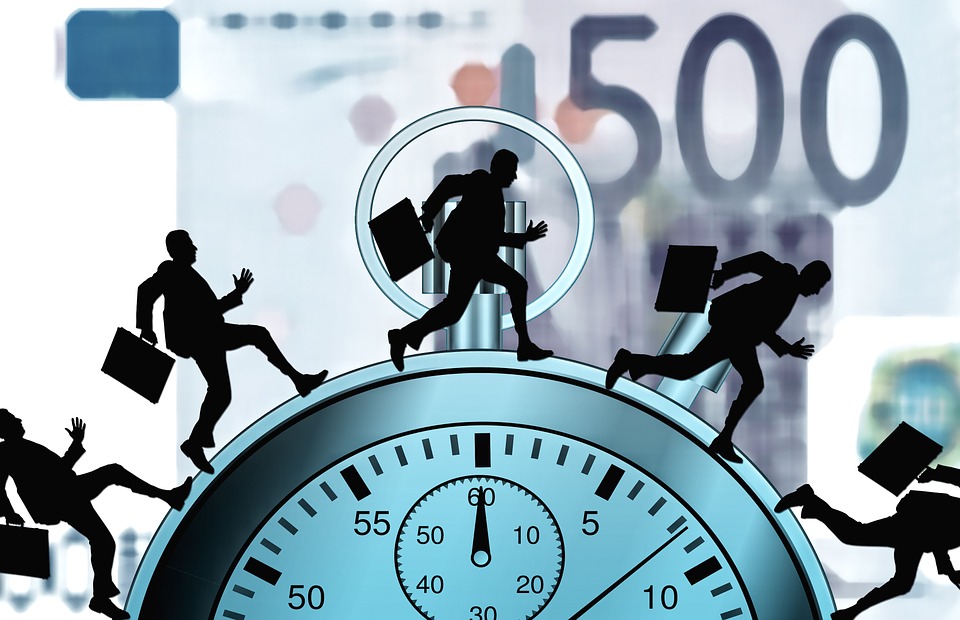I often hear from clients that they and their teams are working harder and with longer hours. They are experiencing all the signs of burnout. They are certain that there is nothing that can be changed for “there is simply too much to do in order to reach our goals.”

What if we re-frame that statement to “how do we accomplish our most important goals in less time?” Note I said “most important” because I have observed that often times leaders and teams haven’t spent enough time thinking about what is actually most important. Remember 20% of activity produces 80% of the value. Not all busy-ness is actually effective at producing breakthrough results.
Today we’ll summarize some compelling research conducted by Dr. Merete Wedell-Wedellsborg in Melbourne, Australia, and published in the Harvard Business Review, October 14, 2018.
We know that innovative problem solving requires more opportunities to work deeply on a problem. Yet in today’s modern organizations, we usually find exactly the opposite. Folks spend an inordinate amount of time in meetings, checking email, and having their flow “interrupted” by required immediate responsiveness and availability.
“Today’s workplace requires people to get into what is called “flow,” a term coined by Hungarian-American psychologist Mihaly Csikszentmihalyi in 1975. Flow refers to the state of full immersion in an activity, and you might know it best as “the zone.” A 10-year McKinsey study on flow found that top executives are up to 500% more productive when they’re in a state of flow.
Yet today’s organizational life hardly reflects conditions necessary for flow. In fact, just the opposite. Research by Adobe found that employees spend an average of six hours per day on email. Another study found that the average employee checks email 74 times a day, while people touch their smartphones 2,617 times a day. Employees are in a constant state of distraction and hyper-responsiveness.
The typical employee day is characterized by:
- Hour-long meetings, by default, to discuss matters that can usually be handled virtually in one’s own time
- Unplanned interruptions, helped in no small part by open-plan offices, instant messaging platforms, and the “ding” of desktop and smartphone notifications
- Unnecessary consensus-seeking for reversible, non-consequential decisions
- The relentless pursuit of “inbox zero,” a badge of honor in most workplaces, but a symbol of proficiency at putting other people’s goals ahead of one’s own
- Traveling, often long-distance, to meet people face-to-face, when a phone call would suffice
- Switching between tasks constantly, and suffering the dreaded cognitive switching penalty as a result, leaving one feeling exhausted with little to show for it
- Wasting time on a specific task long after most of the value has been delivered
- Rudimentary and administrative tasks
This lack of focus is causing folks to work longer hours, and not always with better results.
According to Dr. Wedellsborg, there are three rules to guide us to more flow:
Rule #1: We need to help make workdays shorter and more productive
She conducted a two-week research project in her office, in which it was shown that
“a shorter workday forced the team to prioritize effectively, limit interruptions, and operate at a much more deliberate level for the first few hours of the day. The team maintained, and in some cases increased, its quantity and quality of work, with people reporting an improved mental state, and that they had more time for rest, family, friends, and other endeavors.”
Here are some suggestions that came out of the research:
- Prioritize: Focus on high-value tasks, aligned with both employee strengths and the team’s goals
- Cut: Reduce or eliminate tasks that don’t add value. Cutting your default meeting time from 60 minutes to 30 minutes, turning off notifications, and batch checking your email are all incredibly effective places to start
- Automate: If it’s a step-by-step process-oriented task, it can probably be automated, saving you from doing it yourself
- Outsource: If it can’t be automated, it can probably be delegated or outsourced
- Test: A lot of time is wasted in paralysis analysis and on over-investing in the wrong things
- Start: Do whatever it takes to start your engine. Block out time in your calendar, work on one thing at a time, do the hardest thing first. Use “power hours” to block out short bursts of activity with no distractions
Rule #2: Set Realistic Expectations
- Make it okay for employees to not be in a hyper-responsive state and schedule uninterrupted time to get into a state of flow. Similarly, make it not okay to be interrupting people on a whim.
Rule #3: Some Things Are Worth Fighting For
- She argues for a “flow-friendly workplace and a shorter workday.”
You may likely discover that your employees are less-stressed, more motivated, more productive with better outcomes. In other words, a true competitive edge at work and a real meaningful difference in life.
To learn more about how you can develop this and other important leadership skills you might not yet know, I hope you’ll check out my new book, “Inner Switch: 7 Timeless Principles to Transform Modern Leadership.” You can purchase it from your favorite online retailer at www.susansfreeman.com.
I invite you to continue your learning journey with free tips and tools in my monthly newsletter, Inner Switch Leader Learning. No spam or list sharing. Ever. Click here to sign up: https://bit.ly/43e8Le5

